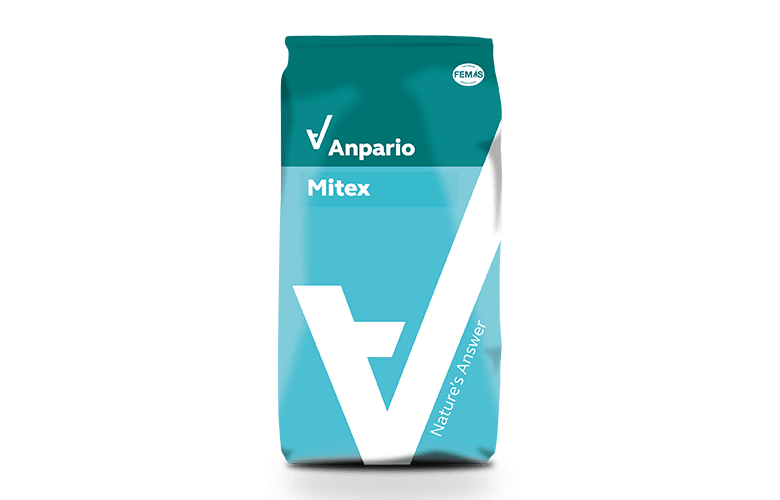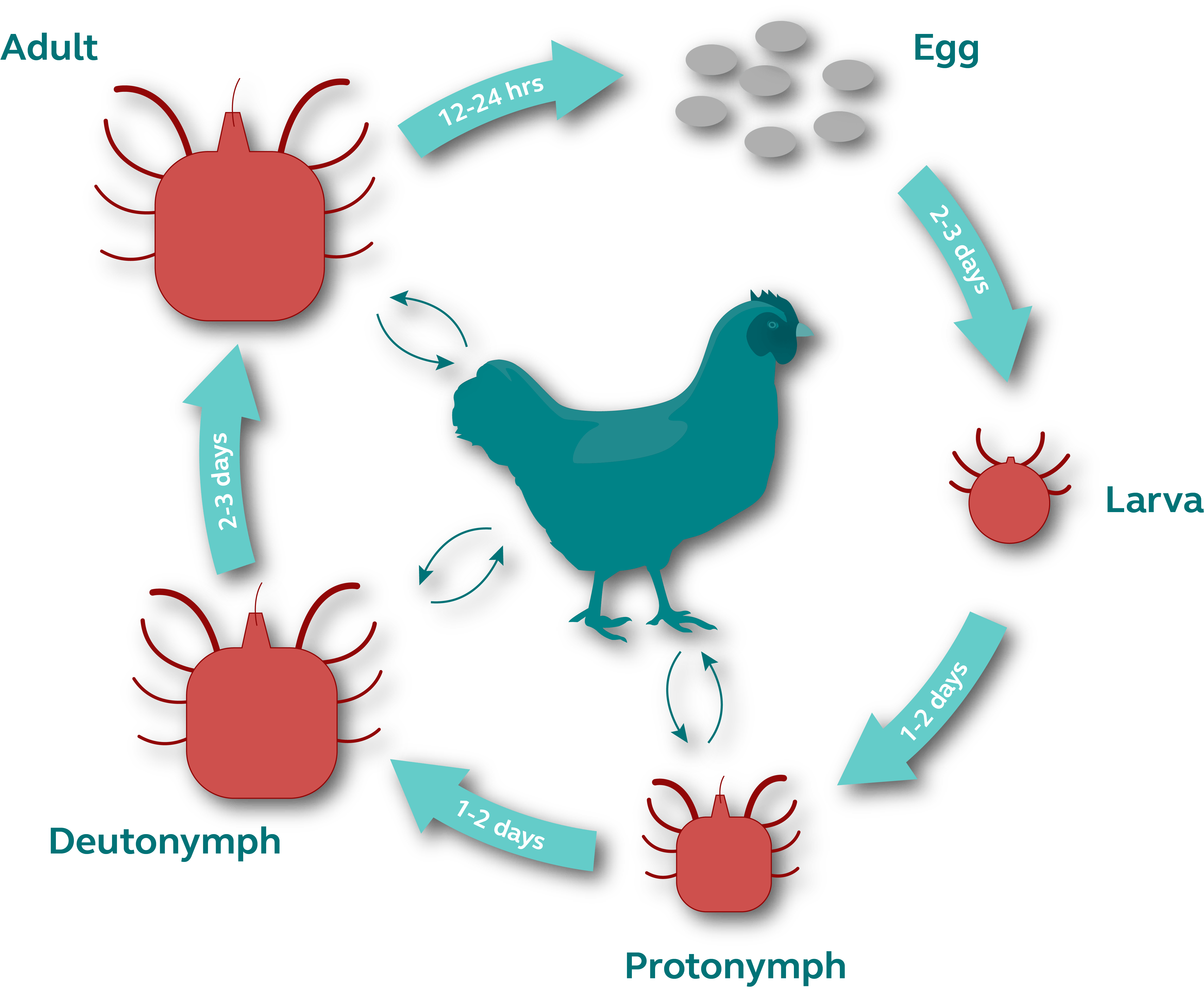Red Mite Control - All You Need To Know
Q1. Can you apply Mitex directly onto the bird
without any detrimental effects?
- Yes! Mitex is natural and safe to use so it can be applied directly onto hen’s feathers without detrimental effects. You can also use Mitex in a dust bath, the natural dust bathing behaviour of hens supports this application. It allows Mitex to get close to the feather follicles where mites may be located for blood feeding.
Q2. Does it eradicate both eggs and larvae?
- Eggs
are unlikely to be eradicated by Mitex application. Larvae can be susceptible
to Mitex. Evidence suggests that Mitex acts on the waxy cuticle of young
(Protonymph and Deutonymph) and adult poultry red mites. It is the abrasiveness
of Mitex which damages the waxy cuticle, leading to red mite desiccation and
death, in a non-toxic mechanism.
Q3. How many times do you need to apply to break the cycle?
- The
life-cycle of poultry red mite can vary from between 7-10 days from egg to
adult, depending on ambient temperature and humidity. Eradicating young red
mites breaks the lifecycle of the mite before they start reproducing. As long
as Mitex is left to cover key hard surfaces in the poultry house, and remains
dry, Mitex will remain effective against mites. The waxy cuticle of mites which
come into contact with Mitex will be damaged, and mites will die within 3 days
of direct contact.
It is recommended to repeat an application every 6 weeks as litter and feathers can cover Mitex coated surfaces, and fans may displace Mitex, lowering its effectiveness. In severe infestation, frequency of application may be increased.
Q4. What are the main benefits of Mitex compared to pharmaceutical and chemical products?
- Mitex comprises of 100% natural materials, including a specially selected source of diatomaceous earth (DE). Anpario’s DE is a dried and purified, feed-grade silica-based powder formed of microscopic skeletons of fossilised, unicellular algae. The benefits include:
- Mitex is a natural, non chemical, non toxic product, and therefore does not require a withdrawal period. This is an advantage of using Mitex compared to chemical treatments, which do require a withdrawal period.
- Not harmful to animals, and approved as safe for animal consumption.
- Avoids the need for more dangerous practices such as poultry house smoking and flame torches.
- The
mode of action for Mitex is mechanical, so there is no risk of resistance as
with chemical products.
Q5. Can Mitex kill other mites as well?
- Yes Mitex is effective against other insects and mites which have a waxy cuticle.
Q6. Does Mitex require a withdrawal period?
- No, Mitex is a natural, non-chemical, non-toxic product, and therefore does not require a withdrawal period. This is an advantage of using Mitex compared to chemical treatments, which do require a withdrawal period.
Q7. Can we use Mitex as preventative to stop a red mite infestation occurring?
- Yes,
Mitex can be used as a prevention against red mite infestation before there is
a problem. This is the ideal management against severe infestation, control
before there is a problem.
The recommended dose for maintenance before an infestation is present is 20g/m2 of hard surface area in the poultry house. Mitex is effective at 30g/m2 when a moderate-severe infestation is present.
Q8. Can you only use Mitex once or do you need to apply more than once?
- Adult
red mites can survive for up to 9 months without feeding. While eggs and young
mites will remain dormant during the winter.
For these reasons it is advisable to apply Mitex more than once as a
pest management control.
The red mite life-cycle is between 7-10 days, applied Mitex is active when dry, and not covered by litter or feathers will be effective at desiccating and killing adult or newly emerging young mites for as long as it remains dry and uncovered, and in place for red mites to crawl over. One application every 6 weeks is recommended, whilst avoiding applying during the peak laying period to avoid causing stress to hens which may lead to reduced egg numbers. In severe infestation, frequency of application may be increased.
Q9. In terms of moisture and humidity what happens to the effectiveness of Mitex?
- If Mitex becomes wet, it will be less effective, but will eventually dry out and become fully effective again. It can absorb approximately twice its mass in liquid. Humidity is less problematic than liquid for Mitex activity, however it is possible that Mitex will absorb humidity from the air.
Q10. How is Mitex best applied during the laying period to reduce stress and avoid disturbing laying performance?
- Though
it is more difficult to apply during the laying period, it is possible if
applied properly. To assure the lowest stress on the hens, apply in the evening
before the hens roost. This is also most effective as new application is added
to the poultry house just before mites become active.
One application every 6 weeks is recommended, it is not recommended to apply during the peak laying period to avoid causing stress to hens which may lead to reduced egg numbers.
Q11. Can I use Mitex with water?
- The use of Mitex is not recommended for inclusion in water.
Q12. What are the application rates?
- Mitex is suitable for all types of housing systems for laying hens, cage, barn and free range production etc.
- For maintenance, Mitex is effective at 20g/m2 as a preventative measure.
- For moderate-severe infestation Mitex is effective from 30g/m2.
- Ensure
egg belts are run after an application to avoid eggs becoming covered in Mitex.
Q13. What happens if
Mitex is accidentally added to feed?
- Mitex is not intended for nutritional purposes, however accidental addition of Mitex to feed will not negatively impact hen health, performance or egg quality. Mitex is approved as feed safe for animal consumption.
Q14. When is the best time of day to apply Mitex?
- Red mites are nocturnal ectoparasites, which do not tolerate light. They are only active at night, which is when they blood feed on laying hens. An ideal time of day to apply Mitex would be towards the evening, as laying hens are settling and starting to roost, before red mites come out to feed. This time would also cause minimal disruption to the hens, and therefore reduce any disturbance in egg laying.
Q15. Do
you need to clear house before you apply Mitex?
- No, you can use it before hens are housed and throughout the laying cycle.
Q16. What
is the storage life of Mitex once the bag is opened?
- The shelf-life of Mitex is 24 months.
- Once the bag is opened, use as quickly as possible. In storage, securely close the opening and store away from direct sunlight in a dry place. Avoid exposure to becoming wet, and humidity, as Mitex can absorb moisture from the air if in a high humidity environment.



